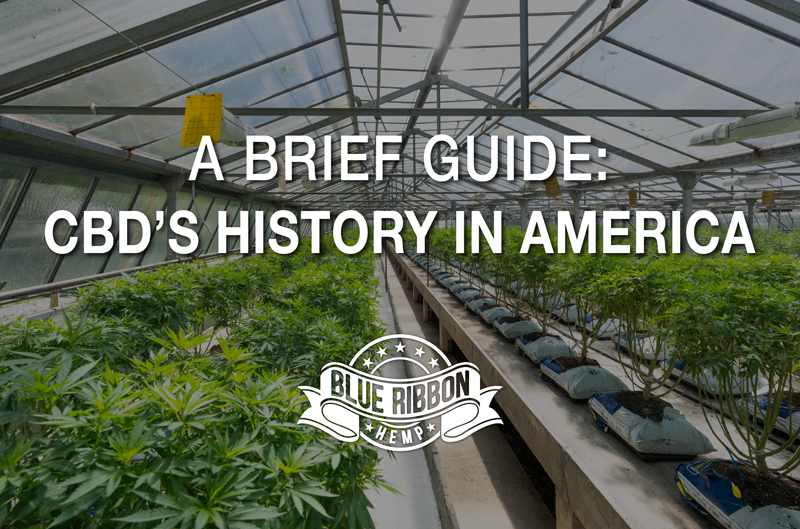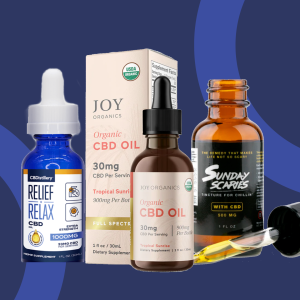
Sponsored ContentA Brief Guide: CBD’s History in America
This article was originally published on Blue Ribbon Hemp. To view the original article, click here.
CBD is just about everywhere you look these days, from online retailers to health foods stores, gas stations and everything in between. If you’re like many Americans, you may never have heard of CBD five years ago. With decades of cannabis prohibition in our past, some are led to assume the potentially therapeutic benefits of CBD are a modern discovery, but that’s far from the case. Let’s take a look at the history of CBD through the ages and how we ended up with a booming and brand-new CBD market in 2021.
Early Cannabinoid Uses and Research
Some of the earliest documented use of a cannabis-derived therapeutic use dates all the way back to 2737 BC. Chinese Emperor Sheng Nung is thought to have used a cannabis-infused tea to aid in a number of ailments [1]. Queen Victoria is believed to have used a CBD rich cannabis plant to alleviate menstrual pain during her reign from 1876-1901 [2]. In 1830, Irish researcher and physician William B. O’Shaughnessy published one of the first studies on cannabis plants therapeutic effects [3]. Throughout world history cannabis has been used as a naturally therapeutic resource, but with the rise of modern medicine, the start of prohibition and lack of scientific research, cannabis was never recognized as a legitimate medicinal source.
Though hemp was a crop common to American colonies and crucial to many economies in early states, after the turn of the 20th century, cannabis plants bred for high THC content began to draw controversy. The entire hemp growing industry (often cultivated for fiber) was targeted based on prohibition propaganda like the scandalous Reefer Madness film and the notion hemp and marijuana were the same plant.
Fast forward nearly a century from O’Shaughnessy’s debut study, advances in technology and research finally begin to break the barrier. The presence of the first individual compound within the cannabis plant was discovered in 1940 by a British chemist named Robert S. Cahn [4]. Just two years later, American chemist Roger Adams pioneered isolating the first cannabinoid ever, cannabidiol or CBD [5]. A few more years down the road, in 1963 the stereochemistry of CBD was discovered by Dr. Raphael Mechoulam and shortly after the stereochemistry of THC. These breakthrough findings began to unveil the direct relationship to the “high” associated with THC and distanced CBD as a similarly mind-altering compound [6].
Research continued to advance and New Mexico’s landmark passage of the 1978 Controlled Substances Therapeutic Research Act legalized the research of cannabis for medicinal purposes [7]. Throughout the 80s Dr. Mechoulam and his team embarked on studies of CBD treatment for epilepsy. Four months into the study and 50% of the participants had stopped having seizures [8]. Despite the milestone study, there was little publicity based on stigmas surrounding cannabis at the time [9].
But, less than one decade later and these cannabis research pioneers work would once again gain interest. The discovery of more individual cannabinoids and their structures coupled with the scientific discovery of the human body’s endocannabinoid system (ECS) was the breakthrough needed.
Legality Changes for THC and CBD Through History
The “war on drugs” was born in America and the Controlled Substance Act (CSA) soon followed. In 1960s, 70s and 80s America, drugs became symbols of rebellious youth and social dissent. According to the CSA, the government considered certain substances to have no medicinal potential benefits but a high potential for abuse. These were placed on in the “Schedule I” classification, in other words “drugs not to do.” Schedule I drugs include substances like heroin, LSD and at one time, cannabis. This classification made it difficult for scientists to research the possible benefits associated with cannabis and hemp plants [10].
The ECS was discovered in 1988 by American scientists Allyn Howlett and William Devane [12]. This realization that the human body has receptors for cannabinoids must mean the body naturally produces them, eventually dubbed “endocannabinoids.” More research lead to an increased understanding of these receptors and the discovery of the specific receptors CB1 and CB2 confirmed that our bodies do respond to cannabinoids like CBD and THC [11]. As research and animal studies continued to progress, the interest in CBD grew across the US and the legality began to change.
In 1996, California became the first state to legalize medical marijuana with the passing of Proposition 215 [13]. Within a few years seven other states followed suit, including Colorado, Maine, Oregon, Alaska, Washington, Nevada and Hawaii. With these milestone legalizations, medical patients now had access to cannabis and research could continue into the potentials of cannabinoid use for therapeutic benefits.
The distinctions between CBD and THC were becoming more widespread throughout the scientific community, there was still a lot of grey area. Many in the general population still has their apprehensions towards marijuana or anything related. This public opinion began to shift more and more in throughout the 2000s. With the rise of the internet and more word of mouth, some CBD users began to share their stories. One of the most notable is that of Charlotte Figi, a young girl from Colorado who was born with a very rare form of chronic epilepsy known as Dravet Syndrome [14]. According her Figi’s parents, they had tried every option modern medicine had to offer. They tentatively turned to cannabis, and after Charlotte consumed a small amount of CBD, her seizures stopped almost immediately [15]. Stories like Charlotte’s have sparked a large level of support and awareness, driving the CBD movement forward.
In 2018 the FDA approved a CBD-based medication for the first time, called Epidolex [16]. That same year, the 2018 Farm Bill federally legalized hemp-derived CBD products and cleared the way for hemp cultivation in the US as long as the THC threshold is at or below 0.3% [17]. There has since been a massive growth in the CBD industry for health, wellness and beyond.
The Future of CBD: What Can We Expect?
Although the perception of CBD has progressed, it has yet to reach its full potential. There are still some stigmas surrounding cannabis derived products, but the more research and education that emerges, the more the benefits of cannabidiol are realized. CBD is still in its infancy of research, but there is promise in the direction of medicinal and therapeutic uses. From pain management to stress relief, all controlled in part by the ECS, CBD is here to stay.
With the rise of any new industry comes the backlash of fast growth. Because research is still limited, finding a reliable source for your CBD is key. Cannabis compounds like CBD are extracted from plants and crafted into a variety of products. This extraction and production process is done differently by many companies, and the outcome is not always the same.
To reap the most benefits of CBD and this new and booming industry, always depend on third party lab test results to ensure quality, potency and purity. CBD brands like Blue Ribbon Hemp are fully transparent and offer a great choice to consumers in this new industry. With all their products tested independently, and with high-quality broad-spectrum products that are truly THC-free, they are a great place to start for anyone new to the booming market. Click here to learn more about Blue Ribbon Hemp and their mission to bring the best CBD products to senior citizens.
Sources:
- https://leg.mt.gov/content/Committees/Interim/2009_2010/Children_Family/Emerging-Issue/mmga-presentation-cannabis-history-aug2010.pdf
- http://news.bbc.co.uk/2/hi/programmes/panorama/1632726.stm
- https://publicdomainreview.org/essay/w-b-o-shaughnessy-and-the-introduction-of-cannabis-to-modern-western-medicine
- https://www.ncbi.nlm.nih.gov/pmc/articles/PMC1760722/
- https://www.freedomleaf.com/roger-adams-cbd/
- https://www.ncbi.nlm.nih.gov/pmc/articles/PMC1760722/
- https://www.nmlegis.gov/sessions/11%20regular/memorials/house/HM053.html
- https://pubmed.ncbi.nlm.nih.gov/351429/
- https://weedmaps.com/news/2019/08/reefer-madness-is-still-dumb-somehow-cool-and-remains-important-even-generations-later/
- https://drugpolicy.org/issues/brief-history-drug-war
- https://weedmaps.com/news/2019/05/cbd-and-your-endocannabinoid-system-explained/
- https://www.labroots.com/trending/cannabis-sciences/8456/endocannabinoid-system-discovered
- https://ballotpedia.org/California_Proposition_215,_the_Medical_Marijuana_Initiative_(1996)
- https://www.epilepsy.com/learn/types-epilepsy-syndromes/dravet-syndrome
- https://www.cnn.com/2013/08/07/health/charlotte-child-medical-marijuana/index.html
- https://www.globenewswire.com/news-release/2018/11/01/1640909/0/en/EPIDIOLEX-cannabidiol-Oral-Solution-the-First-FDA-approved-Plant-derived-Cannabinoid-Medicine-Now-Available-by-Prescription-in-the-U-S.html
- https://docs.house.gov/billsthisweek/20181210/CRPT-115hrpt1072.pdf





































